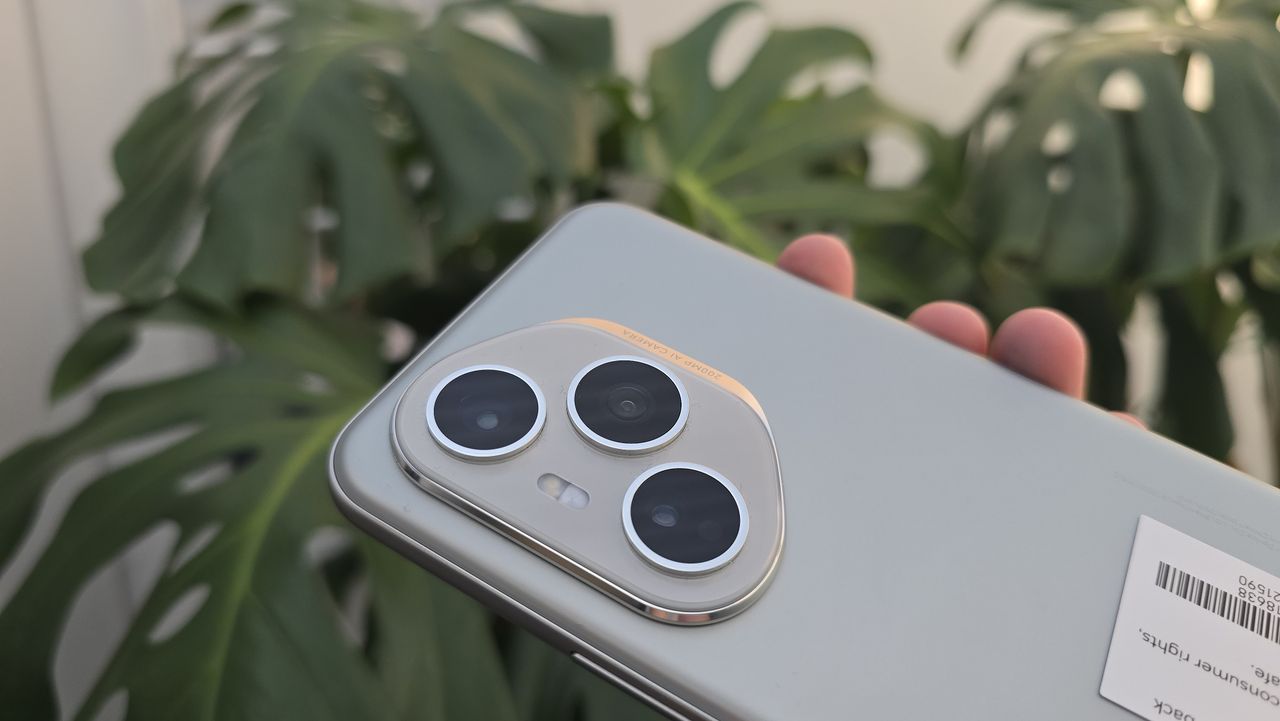Too big, fail too
Inside Apple’s high-gloss standoff with AI ambition and the uncanny choreography of WWDC 2025There was a time when watching an Apple keynote — like Steve Jobs introducing the iPhone in 2007, the masterclass of all masterclasses in product launching — felt like watching a tightrope act. There was suspense. Live demos happened — sometimes they failed, and when they didn’t, the applause was real, not piped through a Dolby mix.These days, that tension is gone. Since 2020, in the wake of the pandemic, Apple events have become pre-recorded masterworks: drone shots sweeping over Apple Park, transitions smoother than a Pixar short, and executives delivering their lines like odd, IRL spatial personas. They move like human renderings: poised, confident, and just robotic enough to raise a brow. The kind of people who, if encountered in real life, would probably light up half a dozen red flags before a handshake is even offered. A case in point: the official “Liquid Glass” UI demo — it’s visually stunning, yes, but also uncanny, like a concept reel that forgot it needed to ship. that’s the paradox. Not only has Apple trimmed down the content of WWDC, it’s also polished the delivery into something almost inhumanly controlled. Every keynote beat feels engineered to avoid risk, reduce friction, and glide past doubt. But in doing so, something vital slips away: the tension, the spontaneity, the sense that the future is being made, not just performed.Just one year earlier, WWDC 2024 opened with a cinematic cold open “somewhere over California”: Schiller piloting an Apple-branded plane, iPod in hand, muttering “I’m getting too old for this stuff.” A perfect mix of Lethal Weapon camp and a winking message that yes, Classic-Apple was still at the controls — literally — flying its senior leadership straight toward Cupertino. Out the hatch, like high-altitude paratroopers of optimism, leapt the entire exec team, with Craig Federighi, always the go-to for Apple’s auto-ironic set pieces, leading the charge, donning a helmet literally resembling his own legendary mane. It was peak-bold, bizarre, and unmistakably Apple. That intro now reads like the final act of full-throttle confidence.This year’s WWDC offered a particularly crisp contrast. Aside from the new intro — which features Craig Federighi drifting an F1-style race car across the inner rooftop ring of Apple Park as a “therapy session”, a not-so-subtle nod to the upcoming Formula 1 blockbuster but also to the accountability for the failure to deliver the system-wide AI on time — WWDC 2025 pulled back dramatically. The new “Apple Intelligence” was introduced in a keynote with zero stumbles, zero awkward transitions, and visuals so pristine they could have been rendered on a Vision Pro. Not only had the scope of WWDC been trimmed down to safer talking points, but even the tone had shifted — less like a tech summit, more like a handsomely lit containment-mode seminar. And that, perhaps, was the problem. The presentation wasn’t a reveal — it was a performance. And performances can be edited in post. Demos can’t.So when Apple in march 2025 quietly admitted, for the first time, in a formal press release addressed to reporters like John Gruber, that the personalized Siri and system-wide AI features would be delayed — the reaction wasn’t outrage. It was something subtler: disillusionment. Gruber’s response cracked the façade wide open. His post opened a slow but persistent wave of unease, rippling through developer Slack channels and private comment threads alike. John Gruber’s reaction, published under the headline “Something is rotten in the State of Cupertino”, was devastating. His critique opened the floodgates to a wave of murmurs and public unease among developers and insiders, many of whom had begun to question what was really happening at the helm of key divisions central to Apple’s future.Many still believe Apple is the only company truly capable of pulling off hardware-software integrated AI at scale. But there’s a sense that the company is now operating in damage-control mode. The delay didn’t just push back a feature — it disrupted the entire strategic arc of WWDC 2025. What could have been a milestone in system-level AI became a cautious sidestep, repackaged through visual polish and feature tweaks. The result: a presentation focused on UI refinements and safe bets, far removed from the sweeping revolution that had been teased as the main selling point for promoting the iPhone 16 launch, “Built for Apple Intelligence”.That tension surfaced during Joanna Stern’s recent live interview with Craig Federighi and Greg Joswiak. These are two of Apple’s most media-savvy execs, and yet, in a setting where questions weren’t scripted, you could see the seams. Their usual fluency gave way to something stiffer. More careful. Less certain. And even the absences speak volumes: for the first time in a decade, no one from Apple’s top team joined John Gruber’s Talk Show at WWDC. It wasn’t a scheduling fluke — nor a petty retaliation for Gruber’s damning March article. It was a retreat — one that Stratechery’s Ben Thompson described as exactly that: a strategic fallback, not a brave reset.Meanwhile, the keynote narrative quietly shifted from AI ambition to UI innovation: new visual effects, tighter integration, call screening. Credit here goes to Alan Dye — Apple VP of Human Interface Design and one of the last remaining members of Jony Ive’s inner circle not yet absorbed into LoveFrom — whose long-arc work on interface aesthetics, from the early stages of the Dynamic Island onward, is finally starting to click into place. This is classic Apple: refinement as substance, design as coherence. But it was meant to be the cherry on top of a much deeper AI-system transformation — not the whole sundae. All useful. All safe. And yet, the thing that Apple could uniquely deliver — a seamless, deeply integrated, user-controlled and privacy-safe Apple Intelligence — is now the thing it seems most reluctant to show.There is no doubt the groundwork has been laid. And to Apple’s credit, Jason Snell notes that the company is shifting gears, scaling ambitions to something that feels more tangible. But in scaling back the risk, something else has been scaled back too: the willingness to look your audience of stakeholders, developers and users live, in the eye, and show the future for how you have carefully crafted it and how you can put it in the market immediately, or in mere weeks. Showing things as they are, or as they will be very soon. Rehearsed, yes, but never faked.Even James Dyson’s live demo of a new vacuum showed more courage. No camera cuts. No soft lighting. Just a human being, showing a thing. It might have sucked, literally or figuratively. But it didn’t. And it stuck. That’s what feels missing in Cupertino.Some have started using the term glasslighting — a coined pun blending Apple’s signature glassy aesthetics with the soft manipulations of marketing, like a gentle fog of polished perfection that leaves expectations quietly disoriented. It’s not deception. It’s damage control. But that instinct, understandable as it is, doesn’t build momentum. It builds inertia. And inertia doesn’t sell intelligence. It only delays the reckoning.Before the curtain falls, it’s hard not to revisit the uncanny polish of Apple’s speakers presence. One might start to wonder whether Apple is really late on AI — or whether it’s simply developed such a hyper-advanced internal model that its leadership team has been replaced by real-time human avatars, flawlessly animated, fed directly by the Neural Engine. Not the constrained humanity of two floating eyes behind an Apple Vision headset, but full-on flawless embodiment — if this is Apple’s augmented AI at work, it may be the only undisclosed and underpromised demo actually shipping.OS30 live demoMeanwhile, just as Apple was soft-pedaling its A.I. story with maximum visual polish, a very different tone landed from across the bay: Sam Altman and Jony Ive, sitting in a bar, talking about the future. stage. No teleprompter. No uncanny valley. Just two “old friends”, with one hell of a budget, quietly sketching the next era of computing. A vision Apple once claimed effortlessly.There’s still the question of whether Apple, as many hope, can reclaim — and lock down — that leadership for itself. A healthy dose of competition, at the very least, can only help.Too big, fail too was originally published in UX Collective on Medium, where people are continuing the conversation by highlighting and responding to this story.
#too #big #failToo big, fail too
Inside Apple’s high-gloss standoff with AI ambition and the uncanny choreography of WWDC 2025There was a time when watching an Apple keynote — like Steve Jobs introducing the iPhone in 2007, the masterclass of all masterclasses in product launching — felt like watching a tightrope act. There was suspense. Live demos happened — sometimes they failed, and when they didn’t, the applause was real, not piped through a Dolby mix.These days, that tension is gone. Since 2020, in the wake of the pandemic, Apple events have become pre-recorded masterworks: drone shots sweeping over Apple Park, transitions smoother than a Pixar short, and executives delivering their lines like odd, IRL spatial personas. They move like human renderings: poised, confident, and just robotic enough to raise a brow. The kind of people who, if encountered in real life, would probably light up half a dozen red flags before a handshake is even offered. A case in point: the official “Liquid Glass” UI demo — it’s visually stunning, yes, but also uncanny, like a concept reel that forgot it needed to ship. that’s the paradox. Not only has Apple trimmed down the content of WWDC, it’s also polished the delivery into something almost inhumanly controlled. Every keynote beat feels engineered to avoid risk, reduce friction, and glide past doubt. But in doing so, something vital slips away: the tension, the spontaneity, the sense that the future is being made, not just performed.Just one year earlier, WWDC 2024 opened with a cinematic cold open “somewhere over California”: Schiller piloting an Apple-branded plane, iPod in hand, muttering “I’m getting too old for this stuff.” A perfect mix of Lethal Weapon camp and a winking message that yes, Classic-Apple was still at the controls — literally — flying its senior leadership straight toward Cupertino. Out the hatch, like high-altitude paratroopers of optimism, leapt the entire exec team, with Craig Federighi, always the go-to for Apple’s auto-ironic set pieces, leading the charge, donning a helmet literally resembling his own legendary mane. It was peak-bold, bizarre, and unmistakably Apple. That intro now reads like the final act of full-throttle confidence.This year’s WWDC offered a particularly crisp contrast. Aside from the new intro — which features Craig Federighi drifting an F1-style race car across the inner rooftop ring of Apple Park as a “therapy session”, a not-so-subtle nod to the upcoming Formula 1 blockbuster but also to the accountability for the failure to deliver the system-wide AI on time — WWDC 2025 pulled back dramatically. The new “Apple Intelligence” was introduced in a keynote with zero stumbles, zero awkward transitions, and visuals so pristine they could have been rendered on a Vision Pro. Not only had the scope of WWDC been trimmed down to safer talking points, but even the tone had shifted — less like a tech summit, more like a handsomely lit containment-mode seminar. And that, perhaps, was the problem. The presentation wasn’t a reveal — it was a performance. And performances can be edited in post. Demos can’t.So when Apple in march 2025 quietly admitted, for the first time, in a formal press release addressed to reporters like John Gruber, that the personalized Siri and system-wide AI features would be delayed — the reaction wasn’t outrage. It was something subtler: disillusionment. Gruber’s response cracked the façade wide open. His post opened a slow but persistent wave of unease, rippling through developer Slack channels and private comment threads alike. John Gruber’s reaction, published under the headline “Something is rotten in the State of Cupertino”, was devastating. His critique opened the floodgates to a wave of murmurs and public unease among developers and insiders, many of whom had begun to question what was really happening at the helm of key divisions central to Apple’s future.Many still believe Apple is the only company truly capable of pulling off hardware-software integrated AI at scale. But there’s a sense that the company is now operating in damage-control mode. The delay didn’t just push back a feature — it disrupted the entire strategic arc of WWDC 2025. What could have been a milestone in system-level AI became a cautious sidestep, repackaged through visual polish and feature tweaks. The result: a presentation focused on UI refinements and safe bets, far removed from the sweeping revolution that had been teased as the main selling point for promoting the iPhone 16 launch, “Built for Apple Intelligence”.That tension surfaced during Joanna Stern’s recent live interview with Craig Federighi and Greg Joswiak. These are two of Apple’s most media-savvy execs, and yet, in a setting where questions weren’t scripted, you could see the seams. Their usual fluency gave way to something stiffer. More careful. Less certain. And even the absences speak volumes: for the first time in a decade, no one from Apple’s top team joined John Gruber’s Talk Show at WWDC. It wasn’t a scheduling fluke — nor a petty retaliation for Gruber’s damning March article. It was a retreat — one that Stratechery’s Ben Thompson described as exactly that: a strategic fallback, not a brave reset.Meanwhile, the keynote narrative quietly shifted from AI ambition to UI innovation: new visual effects, tighter integration, call screening. Credit here goes to Alan Dye — Apple VP of Human Interface Design and one of the last remaining members of Jony Ive’s inner circle not yet absorbed into LoveFrom — whose long-arc work on interface aesthetics, from the early stages of the Dynamic Island onward, is finally starting to click into place. This is classic Apple: refinement as substance, design as coherence. But it was meant to be the cherry on top of a much deeper AI-system transformation — not the whole sundae. All useful. All safe. And yet, the thing that Apple could uniquely deliver — a seamless, deeply integrated, user-controlled and privacy-safe Apple Intelligence — is now the thing it seems most reluctant to show.There is no doubt the groundwork has been laid. And to Apple’s credit, Jason Snell notes that the company is shifting gears, scaling ambitions to something that feels more tangible. But in scaling back the risk, something else has been scaled back too: the willingness to look your audience of stakeholders, developers and users live, in the eye, and show the future for how you have carefully crafted it and how you can put it in the market immediately, or in mere weeks. Showing things as they are, or as they will be very soon. Rehearsed, yes, but never faked.Even James Dyson’s live demo of a new vacuum showed more courage. No camera cuts. No soft lighting. Just a human being, showing a thing. It might have sucked, literally or figuratively. But it didn’t. And it stuck. That’s what feels missing in Cupertino.Some have started using the term glasslighting — a coined pun blending Apple’s signature glassy aesthetics with the soft manipulations of marketing, like a gentle fog of polished perfection that leaves expectations quietly disoriented. It’s not deception. It’s damage control. But that instinct, understandable as it is, doesn’t build momentum. It builds inertia. And inertia doesn’t sell intelligence. It only delays the reckoning.Before the curtain falls, it’s hard not to revisit the uncanny polish of Apple’s speakers presence. One might start to wonder whether Apple is really late on AI — or whether it’s simply developed such a hyper-advanced internal model that its leadership team has been replaced by real-time human avatars, flawlessly animated, fed directly by the Neural Engine. Not the constrained humanity of two floating eyes behind an Apple Vision headset, but full-on flawless embodiment — if this is Apple’s augmented AI at work, it may be the only undisclosed and underpromised demo actually shipping.OS30 live demoMeanwhile, just as Apple was soft-pedaling its A.I. story with maximum visual polish, a very different tone landed from across the bay: Sam Altman and Jony Ive, sitting in a bar, talking about the future. stage. No teleprompter. No uncanny valley. Just two “old friends”, with one hell of a budget, quietly sketching the next era of computing. A vision Apple once claimed effortlessly.There’s still the question of whether Apple, as many hope, can reclaim — and lock down — that leadership for itself. A healthy dose of competition, at the very least, can only help.Too big, fail too was originally published in UX Collective on Medium, where people are continuing the conversation by highlighting and responding to this story.
#too #big #fail
















